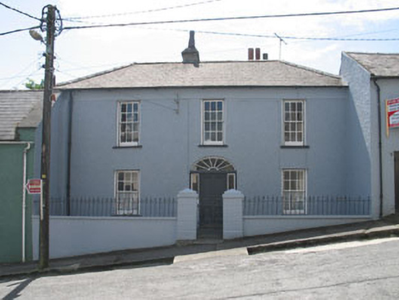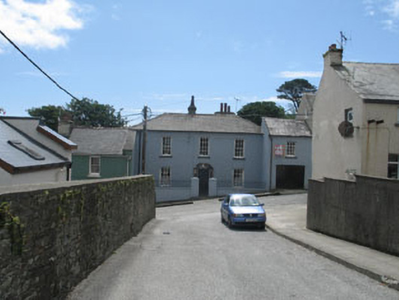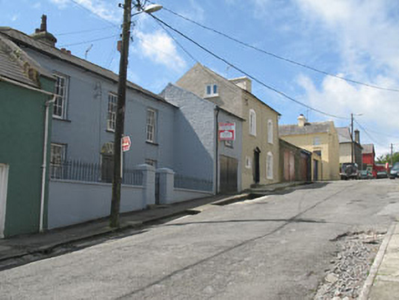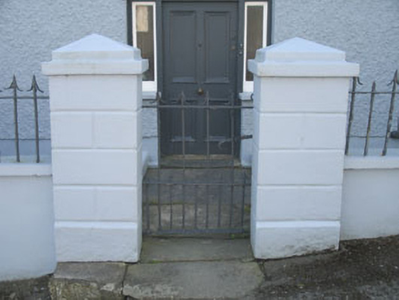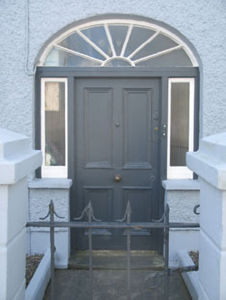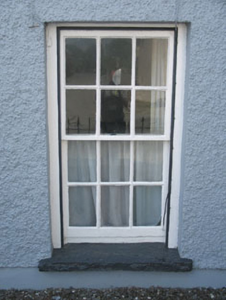Survey Data
Reg No
20836028
Rating
Regional
Categories of Special Interest
Architectural, Historical, Social
Previous Name
The Barracks
Original Use
House
Historical Use
Garda station/constabulary barracks
In Use As
House
Date
1840 - 1845
Coordinates
118359, 31113
Date Recorded
11/07/2008
Date Updated
--/--/--
Description
Terraced three-bay two-storey house, built 1841, on an L-shaped plan; single-bay (single-bay deep) two-storey lean-to return (south). In alternative use, 1901; 1911. For sale, 2008. Sold, 2010. Hipped fibre-cement slate roof extending into lean-to fibre-cement slate roof (south), ridge tiles, rendered off-central chimney stack (east) having chamfered capping with rendered chimney stack on axis with ridge (west) having chamfered capping, and cast-iron rainwater goods on rendered eaves with cast-iron downpipe. Roughcast walls bellcast over rendered plinth with rendered band or frieze to eaves. Hipped segmental-headed central door opening with timber mullions on cut-limestone threshold supporting timber transom, and concealed dressings framing timber panelled door having sidelights below fanlight. Square-headed window openings with cut-limestone sills, and concealed dressings framing six-over-six timber sash windows without horns having part exposed sash boxes. Square-headed window openings (south) with concealed dressings framing two-over-two timber sash windows. Set back from line of street with rusticated piers to perimeter having shallow pyramidal capping supporting arrow head-detailed wrought iron gate.
Appraisal
A house representing an important component of the mid nineteenth-century built heritage of Castletownshend with the architectural value of the composition suggested by such attributes as the compact plan form centred on a restrained doorcase showing a simple hub-and-spoke fanlight; and the slight diminishing in scale of the widely spaced openings on each floor producing a graduated tiered visual effect with those openings showing shimmering glass in hornless sash frames. NOTE: The house is named as "Rose Cottage" on the original deeds (1841) and is believed to have been the home of a Church of Ireland clergyman and later a coastguard official before the construction of Castletownshend Coastguard Station (1866). The house was subsequently adapted as a constabulary barrack and its railed cottage garden is visible in an early photograph by Sir John Jocelyn Coghill (1826-1905) showing a company of five armed officers standing in the centre of the street with a top hatted gentleman and cloth capped boy looking directly at the camera. The constabulary barrack was headed (1901) by Sergeant Henry Watson (----) and (1911) by Sergeant William Joyce (----) and was adapted as a Garda Síochána station on the foundation of the Irish Free State (1922): the house was vacated (1947) when a purpose-built Garda Síochána station was erected nearby (see 20836007). The house, long known as "The Barracks", has recently reverted back to its original name "Rose Cottage".

